Come Here to Me, You Fortunate Citizen of the World
I spent far too much of the past year researching American Holocaust education. It was a dispiriting exercise, but not for the reasons one might expect. My deep dive into this topic took me through the world of Holocaust museums, Holocaust education mandates, Holocaust curriculum design, Holocaust lesson plans, Holocaust teacher-training workshops, Holocaust survivor holograms, Holocaust virtual-reality programs, and somewhere at the bottom of it all, students. What disturbed me on this journey into the bowels of American moral education wasn’t the horror of genocide but rather the relentless desire to extract something inspirational from it. These programs often maintain a blinding focus on “upstanders” (the opposite of bystanders; previously known as “Righteous Gentiles”), ahistorical fiction (like the egregious young adult novel The Boy in the Striped Pajamas), and memoirs and testimony from extremely atypical victims such as Anne Frank (who did not speak Yiddish, as more than 80 percent of victims did). As I recently argued in the Atlantic, this approach suggests a remarkably rosy view of the murder of six million Jews—one in which nobody bothers learning the actual content of Jewish civilization, the heroes are all inspiring non-Jews, and nobody wants revenge.
If you haven’t read the work of Zalmen Gradowski, I can confidently say that you, like the students across America learning about happy upstanders, know little about the actual experiences of Jewish victims (rather than survivors) of the Holocaust. Drop whatever you are doing right now and go order the first complete English translation of his manuscripts, newly published as The Last Consolation Vanished. You may never be able to read another Holocaust-related book again.
Gradowski was both a talented writer and a heroic warrior, whose name should be as well known in Jewish history as Bar Kokhba’s—not least because he and Bar Kokhba were equally doomed. Gradowski was born around 1909 to a religious family in the town of Suwalki in the region known to Jews as Lita or Lithuania; as a young adult, he was politically active in the Revisionist wing of the Zionist movement named for Bar Kokhba’s last stand, Betar. By 1942, he and his wife, Sonja, and most of their large extended families were deported to Auschwitz, where all but Gradowski were gassed and burned on arrival. Gradowski was instead forced into what the Nazis named the Sonderkommando (special force): Jewish prisoners tasked with escorting other Jewish prisoners into the gas chambers and then removing their bodies and incinerating them, work he did daily for almost two years.
This living nightmare ended for him on October 7, 1944, in a revolt he helped organize that lasted one day. Using gunpowder smuggled in tiny amounts over many months by Jewish female prisoners working in the camp’s munitions factory, he and his fellow rebels blew up Crematorium 4, killed three guards, and facilitated the escape of several hundred people. Within hours, Nazi officers recaptured most of the escapees and murdered more than four hundred Sonderkommandos and other prisoners.
Gradowski was murdered in the revolt, as he fully anticipated. He prepared for it by writing several manuscripts documenting, in a high Yiddish literary style, his experiences in this abyss, which he buried in metal canisters around the perimeter of the crematoria. This was possible because the Sonderkommando—who were “rewarded” for their work with better living conditions, which allowed them to remain physically fit enough to haul bodies—were housed alongside the Kanada Kommando, Jewish prisoners tasked with sorting through the plundered belongings of murdered fellow Jews. Yaakov Freimark, who worked in the Kanada Kommando and knew Gradowski from Suwalki, supplied him with writing materials from the plunder. Freimark survived and later testified that Gradowski prayed each day with a tallit and tefillin (presumably also from the plunder), reciting Kaddish daily for those whose bodies he had burned.
As Philippe Mesnard’s superb foreword explains, Gradowski’s manuscripts, which were among several other Sonderkommandos’ manuscripts composed and hidden in this fashion, were found almost immediately after the camp’s liberation. An unnamed young man sold them to a survivor named Haim Wollnerman, who had returned after liberation to his hometown of Oswiecim, where Auschwitz was located. Wollnerman immediately recognized the documents’ value but delayed seeking publication until he fulfilled the request Gradowski made at the top of one manuscript—to get in touch with his uncle in New York (he provided an address) and to publish the manuscripts with a photograph of Gradowski and his wife.
Once Wollnerman had made his way to Israel, there was another obstacle—the common view among Israelis at the time that Sonderkommandos were collaborators in genocide, a horrifically cruel claim that has not vanished. Astoundingly, Nobel laureate J. M. Coetzee, in a two-sentence blurb on this new volume’s jacket, calls Gradowski, a leader of Auschwitz’s only uprising, a “tragically riven collaborator in the Holocaust.” (From this we can conclude that no one edits blurbs from Nobel laureates.) It took Wollnerman three decades to publish the work under the title In harts fun gehinom (In the Heart of Hell). Other editions and translations appeared over the years, including an English-language excerpt in David G. Roskies’s indispensable 1988 anthology The Literature of Destruction. Gradowski’s work and that of other Sonderkommandos also inspired the acclaimed 2015 Hungarian film Son of Saul. The fact that Gradowski’s work will probably never be as well- known as Anne Frank’s diary or, say, the memoirs of Eva Mozes Kor reveals a great deal about the stories people do and don’t want to hear about the Holocaust.
Gradowski knew this even then. His first manuscript, after its necessary opening with its list of all his murdered relatives, begins like this:
[Come] here to me, you fortunate citizen of the world who lives in a land where happiness, joy and pleasure still exist, and I will tell you of the abject criminals of today who took an entire people and turned their happiness to sadness, their joy into eternal sorrow—their pleasure forever destroyed. . . . Are you ready, dear friend, to begin the journey? Just one more condition I will set for you: bid farewell to your wife and child, for . . . you will no longer want to live in [a world] where such diabolical acts can be committed. Bid farewell to your friends and acquaintances, for you will certainly [after] looking at the horrible sadistic deeds from the supposedly cultured devil’s spawn, you will want to erase your name from the family of man and will regret the day that you were born.
Like much of Yiddish literature, Gradowski’s long incantatory introduction is laced with deliberate ironic echoes of biblical and other traditional texts, because that is the discourse in which the overwhelming majority of murdered Jews thought, spoke, and wrote. The fact that many non-Jewish readers will likely find this style alienating is itself revealing, because its off-putting nature for English readers isn’t just about references that might go over a reader’s head. This style is a literary enactment of the deepest element of Jewish life, one that antisemites cannot bear: responsibility for both past and future.
Like the classical Jewish texts upon which he drew, Gradowski’s writing openly demands his readers’ participation. He does not allow his readers to be passive observers; he fully implicates them in whatever happens next. This prophetic call to responsibility is precisely the call that the antisemitic world has rejected—then and, in endless unspoken ways, now. In my depressing journey through American Holocaust education, I sensed an unexamined reason for the broad appeal of celebrating upstanders: celebrating those stories means accepting a world in which morality is optional. Encouraging people to be upstanders means merely encouraging them to be exceptions in their society, instead of demanding that they change the society itself.
But talking about Gradowski’s style is a way of avoiding his content, or what Wollnerman called the heart of hell. Come, let him take us there.
What is most painfully clear in Gradowski’s testimony is the sadism of the Nazi enterprise. This seems obvious, but it actually runs counter to most Holocaust education. It upends the still-popular Arendt-branded idea of the “banality of evil,” in which evil resides in the Nazis’ hyperefficient bureaucratic approach to genocide. Here, for instance, is his description of Jews forced to traverse several miles from a transit camp to a train to Auschwitz:
You see, my dear friend, there far away, a black mass lying on a shining white road. Barely moving, it is encircled by tall black shadows that continually bend toward the creeping mass and repeatedly rain down blows on the deeply bowed heads. We do not know what it all represents. Is it a herd of cattle being driven or a group of people who have lost half their height? . . . It is a mass of Jews, thousands upon thousands of them, young and old, now on the road leading to their new home. They do not walk but crawl on all fours. So has ordered the young bandit who holds in his hands their fate, their life and being. This awful scene he wanted to see with his own eyes, how a huge mass of people can be turned into animals. . . . You see how, after the long distance they have marched, they stagger to their feet, broken and exhausted, and must now sing and dance to amuse their guards.
Making thousands of elderly people and parents carrying babies crawl for miles through snow and then sing and dance is the opposite of efficient. Gradowski also details the deceits the Nazis used to disorient Jewish victims, more or less for laughs—convincing victims that families wouldn’t be separated, for instance, or spreading rumors about special treatment. And then there was the sexual excitement of the Nazi officers who presided over women being stripped of their clothing. The animating principle here was neither bureaucratic efficiency nor boredom; it was sadism.
Gradowski brings us along on his family’s transport to Auschwitz on a dangerously overloaded passenger train, which was the most common form of transport there. (Boxcars were used only later in the war—but survivors were more likely to have ridden those; almost no one transported in 1942 or 1943 lived until liberation.) Someone from the train’s previous transport had scratched an outline of the route on the inside of one car by naming familiar places glimpsed out the windows, with the final stop marked only as “Yekkeland” (land of Germans). As the victims endure thirst and hunger inside the train, they pass normal passenger trains on parallel tracks full of people eating and sleeping and pedestrians outside—who often laugh and make throat-slitting gestures as they pass. (The absence of upstanders is less remarkable than the absence of mere bystanders: everyone is in on the fun.) Upon arrival, most people are loaded onto trucks, with no explanations. Only later does our narrator learn where they have gone and that his task is to incinerate them.
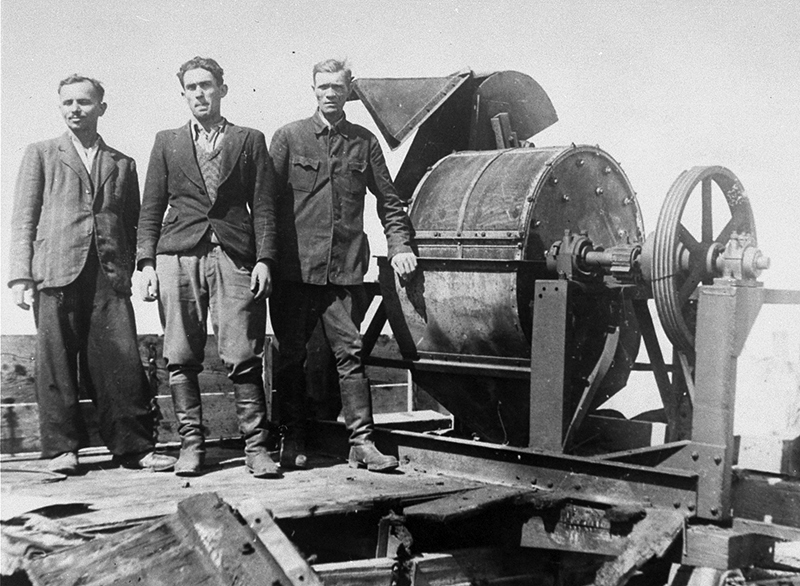
Gradowski eases us into this gently, taking us first to the quarters of the Sonderkommando, where he describes an incident in which more than half of his “brothers” were removed and murdered. This is the “last consolation vanished” of the title. Mourning those familiar faces becomes an emotional stand-in for the unfathomable murders of these men’s actual families.
The Sonderkommandos’ ranks had been increased in the summer of 1944 to handle the murders of several hundred thousand Hungarian Jews. The subsequent reduction in their numbers became a key trigger for the revolt, as the remaining men understood their deaths were imminent. In this section, Gradowski provides a deep, painful, and unexpected portrayal of the religious lives of these men, many of whom still studied Torah and gathered for daily and Shabbat prayers. The Sonderkommando had downtime other prisoners lacked, resting between transports to ensure they could physically haul thousands of bodies daily—and while prayers and Torah study were done in secret with men assigned as lookouts, Gradowski suggests that Nazi officers sometimes indulged their Jewish prayers because they enjoyed mocking their futility.
Gradowski’s description of religious life in Auschwitz reveals the arrogant bankruptcy of both the false triumphal atheism and the false triumphal theism that taints nearly all postwar discussions. He describes a Friday night service held by “a group of stubborn and observant Jews”:
[They] repress any bitterness, drown out any protest that daily assaults their heart and soul, and wants, demands a reckoning—wants to ask why? No! They allow themselves once more to be caught in the net of naive faith. No reckoning, no theorizing. . . . And maybe, maybe deep in their hearts “something” weighs upon them, will not let them rest, but still they hold fast, so as not to lose their last consolation, not to lose their last support.
Gradowski does not celebrate this “naive faith,” as many religious Jews today do when telling tales of religious commitment during the Holocaust. Instead he recognizes it for what it is: the expression of a deep emotional need. Meanwhile, he gives equal respect to those who ask how one can pray in the midst of such horrors:
Songs of praise over a sea of our own blood? Pray to Him who will not hear the cries and screams of innocent little children, no! And this Jew walks away bitter, angry at the others, who do not understand as he does.
And he also respects a third group:
Even Jews who were once religious now stand coldly off to the side. For a long time now they have not been at peace with their God. . . . They don’t want to speculate too much, for fear of losing their last support, for fear of destroying their last consolation. So they sit quietly, they do not demand a reckoning from Him, nor do they offer any reckoning to Him. Sometimes they would like to pray, pour out their hearts, but cannot. They don’t want to be false, false to Him and to themselves.
But Gradowski also tells us how sometimes one would be drawn in by a familiar prayer or melody: “He swims back to the years gone by. And sees himself in his home once more.” From there he draws us, powerfully, into a reverie of Shabbat evenings past: synagogue prayers in which the lyrics of Lekha Dodi provided hope to the downtrodden (“Do not fall into despair, you son of ancient martyrs!”), walks on quiet streets, the warmth and joy of one’s family singing around the table.
Often he flees prayer precisely to avoid painful memories. But sometimes he “would run there, to that spot, to that corner where a few minyans of Jews stand and pray in saintly piety, and from there I would seize the light, take a spark and run away with it, and run to my bunk. . . . I was content, I had a tearful Sabbath, a cup of tears.” In this telling, Jewish tradition is “inspiring” not because it offers hope for the future, as it was intended to do, but because it offers refuge in a past that will never return.
The beating heart of this book is its final section, describing in detail the murders of five thousand Jews transported from the “model” ghetto of Theresienstadt outside of Prague. Theresienstadt was where Nazis corralled many of central Europe’s most celebrated and assimilated Jews, parading their families for Red Cross inspectors before transporting them to their deaths. Thanks to its five-star prisoners, this particular group was imprisoned in Auschwitz’s “family camp” for six months instead of being gassed on arrival. (This unusual treatment was likely designed to deceive potential Red Cross inspectors.) On Erev Purim 1944, the Nazis staged an elaborate series of ruses to dispel potential rebellion and then gassed all five thousand in front of an audience of top brass. The Sonderkommandos escorted the women and men, in separate groups, into the gas chambers—a task they had done daily for nearly two years, but this group was different because unlike the others, they knew what was happening.
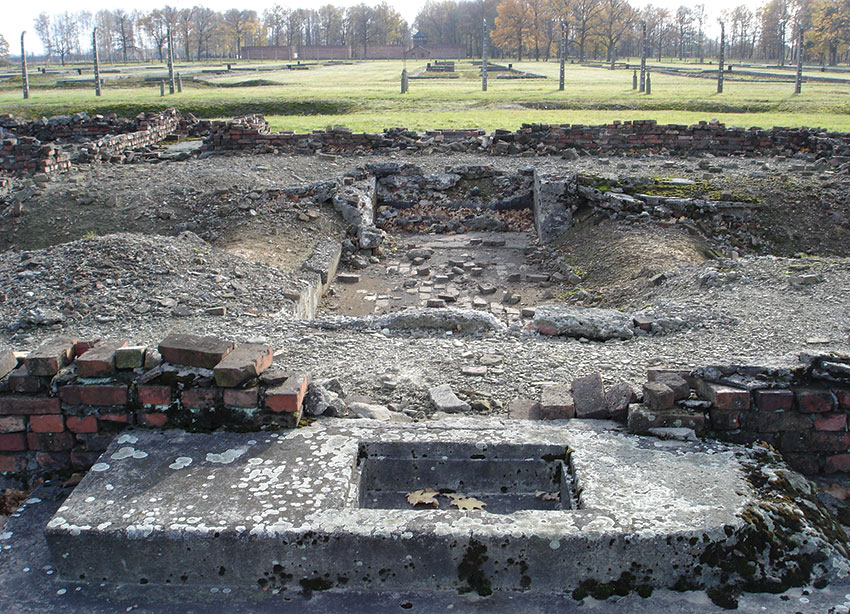
Gradowski describes in detail how one woman, during the slow naked march of 2,500 women and children into the gas chamber, railed at the assembled Nazi officers, taunting them with news of their army’s defeat and mocking them for killing her and her small daughter instead of Soviet soldiers. Another woman jeers at them for looking at naked women they’d never be able to see otherwise, announcing that “your game is over, you will never be able to murder all the Jews,” and slapping the commanding officer’s face three times; when the officers club her head, “her face glows with joy. She is happy and content.” I’d read this before in Roskies’s anthology, but I still wasn’t prepared for the power of the additional detail this full manuscript includes, and particularly for the level of emotional resistance displayed by these women.
As the thousands of women file into the gas chamber, “all at once, spontaneously, a song rings out. Once again the clique of superior officers stand transfixed.” And rightly so: the song is the Soviet anthem, “The Internationale”—not because they are necessarily Communists but because these Jewish women are expertly trolling the Nazis, reminding them of their imminent defeat on the Eastern front. It works: “The melody of the song does not let them rest, it troubles them, shatters the certainty they felt up to now,” Gradowski tells us, and they can do nothing to stop it. The song gives way to others—the Czech national anthem, the Yiddish partisan song, and also Hatikva. “This song too is known to ‘them,’” reminding the Nazis of Jews around the world who “will go on living and will build a future, build a home in that ancient land.” Soon the doors of the gas chamber are sealed and bolted. “And yet they go on singing.”
This would be inspiring, except that it is not the end—for now Gradowski tells us about opening the gas chamber doors after thousands of bodies are “entwined together in a tangled ball” where heads “float on the surface of the naked waves.” The “brothers” disentangle these bodies—“more than once you recognize a familiar face”—and then load them into ovens, two at a time, though “small children lie off to one side, thrown together in a heap—to be added to adult bodies.” In the ovens, “the arms and legs begin to twitch—for the tightening blood vessels makes the limbs move” and “what burns the longest is the head.” Gradowski and his fellow Sonderkommandos “must transform ourselves into automatons that do not see or feel or understand” to do this, but he does not allow that for his readers. Instead he tells us about these bodies: “A child pressed to its mother’s breast, what joy, what happiness the mother and the father had at the birth of the child. Built a home, wove an idyllic future for them, and soon in twenty minutes no trace of them will remain.”
Sorrow is the wrong emotion here, though we are taught by virtually all Holocaust education that that is what we should feel. Sorrow would be appropriate if this were a natural disaster. But sorrow disempowers, which is precisely why it has been embraced by those trying to extract universal lessons from the murders of Jews.
The proper response here is rage. In the fire of these ovens, Gradowski recognizes “fires lit long ago by the hands of the barbarians and murderers of the world, who hope by their light to drive away the darkness of their world of horror.” His response is not mourning but a plea for revenge: “may those who lit the fire be devoured in its flames.” Imagining the victims speaking from the smoke clouding the night sky, he writes, borrowing the language of the prophets, “We will pursue you forever. Your light will not shine down upon this earthly world, not until we here above can have an answer for our blood.” Elsewhere he urges his reader: “live for revenge!”
Gradowski did. His rebellion was as pointless as Bar Kokhba’s and also as powerful. Today, in the face of a tidal wave of pseudoinspirational Holocaust stories, reading his work is the smallest possible act of revenge. And on the first page of this volume, you will find the only fulfilled wish of this upstander who rose up amid the horror as a writer, a prophet, and a warrior: a photograph of the author and his wife.
Comments
You must log in to comment Log In
Suggested Reading
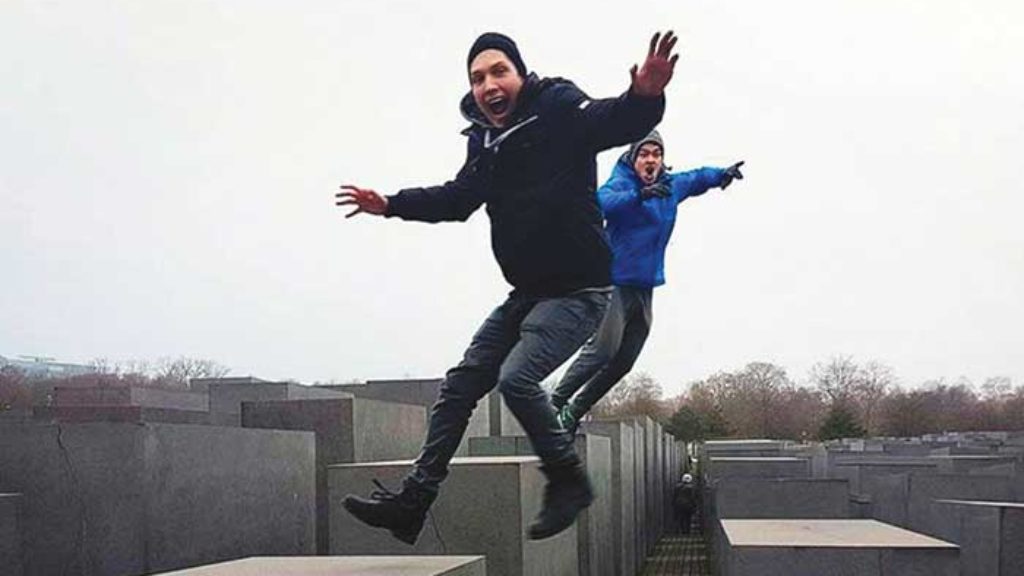
Hashtag Holocaust
Memorials remain, unmoved and unchanged, by the inevitable erosion of memory.
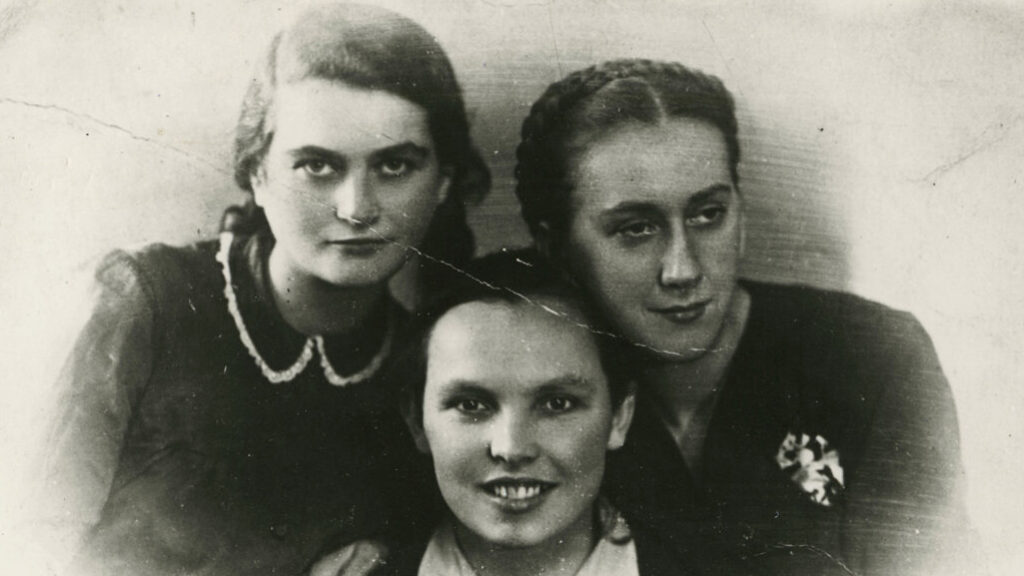
These Heroic Girls
On Christmas Eve, 1941, three young Jewish women spent the evening in the company of Nazis, secretly gathering intelligence on behalf of the underground Jewish resistance.
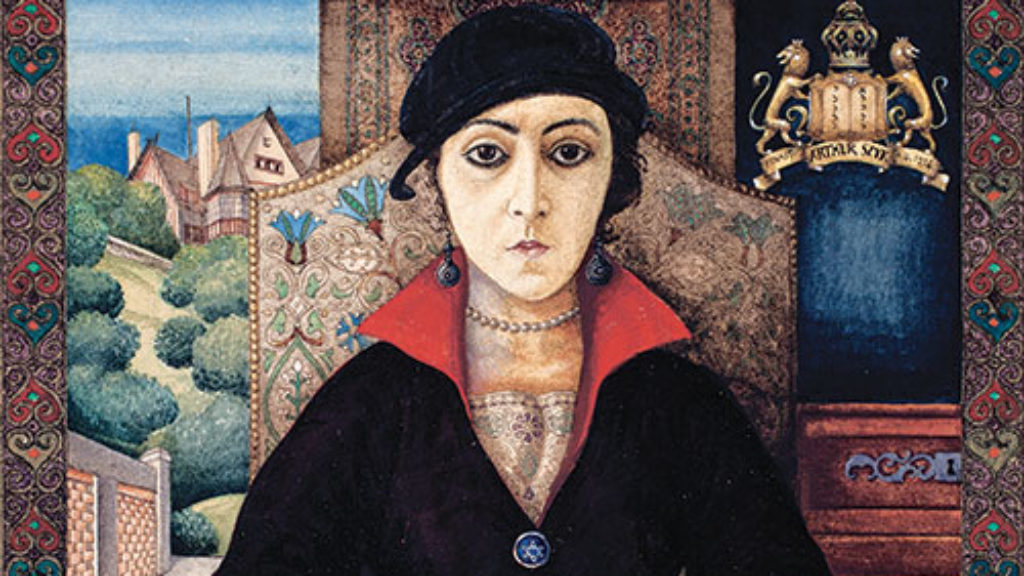
Ink and Blood
Arthur Szyk may well be the only great Jewish artist whose work countless people recognize simply because they have attended a Passover Seder. Less well known are the explicit connections between the Egyptian pharaoh and Hitler that Szyk had embedded in his original version of the haggadah he created in the 1930s.

Instagramming the Holocaust
This Holocaust Memorial Day, an online project known as Eva’s Stories is uploading snippets of video every 30 minutes to the @eva.stories Instagram page.
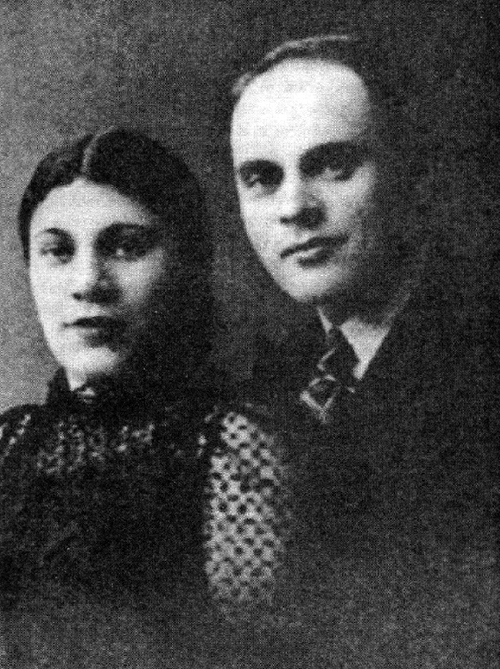
Carole Stock
Thank you Dara for your brutal honesty as always. Heartbreaking to read but read we must.
YES - RAGE,RAGE,RAGE
Grave men, near death, who see with blinding sight
Blind eyes could blaze like meteors and be gay,
Rage, rage against the dying of the light.
Henry Greenspan
I strongly agree with the thrust of Dara's article. Part of what it points to is the widening chasm between pop Holocaust memory/education institutions and genuine Holocaust scholarship. In the latter arena--not without is own warts--Gradowski and the related themes that Dara underlines are well known. The critique of "redemptive" or "triumphalist" discourse--what I call taking the "cide" out of genocide (and sometimes even the genus)--is also common. But that doesn't sell pancakes, feature films, or curricula. Talking about the mass murder of identifiable people is not good for business. I mean that literally. I recently got hold of a "rebranding memo" (their term) in which a "Holocaust Center" explained why it was removing the word "memorial" from its name. Instead, it is now named for the mega donor who paid for the new building. The institution is now called the "Mega Donor Holocaust Center." And so it goes.